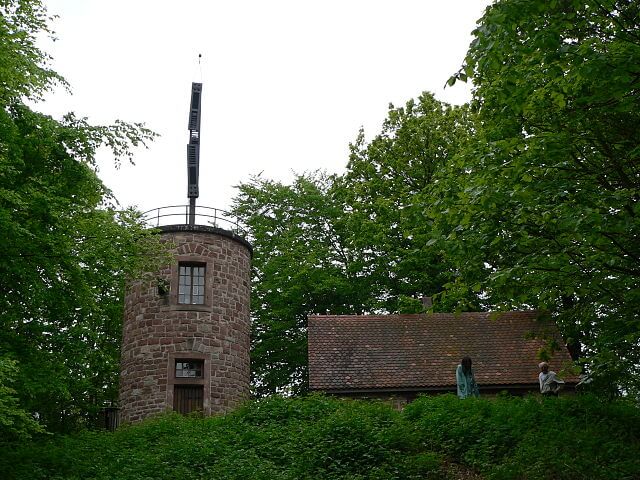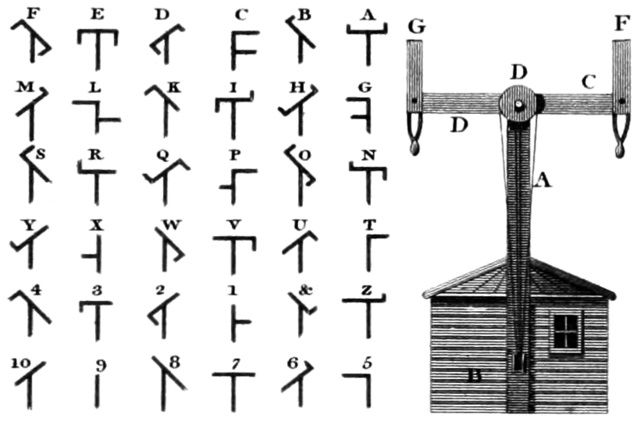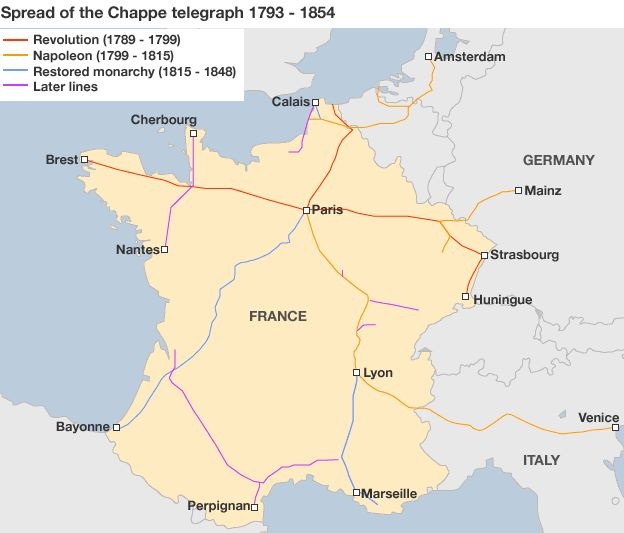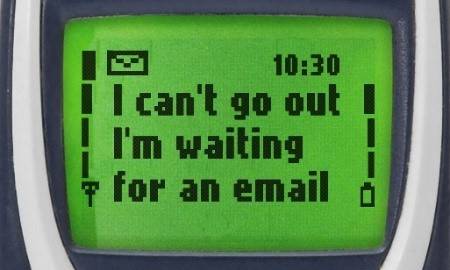Before the advent of the electric telegraph, there had been systems of optical telegraph in use. They had been called a variety of names including the semaphore line and semaphore visual telegraph. A particular system in France named le systeme Chappe was the first implemented system in Europe.
There had been 3 designs developed by Claude Chappe and his brothers
-
Synchronous Telegraph Experiments (1790-1791)
-
Panel Telegraph Experiments (1792)
-
Semaphore Telegraph System (1793)
The first message over optical telegraph was sent in 1791 between Claude Chapper and his brother, which read "si vous reussissez, vous serez bientôt couvert de gloire" (If you succeed, you will soon bask in glory).
The Semaphore Telegraph System was eventually adopted and widely implemented all throughout France. At the time of French revolution and Napolean prominence, the initial motivation to implement Semaphore Telegraph System was military usage.
The first two prototypes built for demonstrations were destroyed by angry mobs. The Synchronous Telegraph Experiments used clocks, while the Panel Telegraph Experiments used 5 bit binary code allowing 32 possible combinations, which was similar to later systems developed in Sweden and England.
The operation of the optical telegraph system
Stations were built 10 to 15 km apart, operators did not know the exact message, but only relaying the symbols which will be decoded at the final receiving station.
The semaphore stations are equipped with rotating arms to depict the symbols, the message is received by human eyes aided by telescope at the next station. The symbols are encoded, so the first and last stations of the semaphore lines have the code books to encode and decode the message into symbols.
The optical telegraph network
In 1794 Paris was linked to Lille by a chain of signaling stations. In a matter of a few years, the semaphore line was soon extended to all major cities in France, as well as other cities such as Dunkirk, Amsterdam, Brussels, Strasbourg, and Milan. At its peak, the semaphore network boasted 534 stations covering more than 5,000 km.
Data transmission rate
The first symbol of the message from Paris to Lille reportedly passed through 15 stations over a distance of 230 km in 9 minutes. The line to Lille typically transferred 36 symbols, a complete message, in about 32 minutes.
On average, the semaphore network supported transmission of information at a speed of over 500 km/h, when a postal coach or messenger on horseback mean speed was around 10 km/h.
The role of optical telegraph
The first news transmitted by Chappe telegraph was the victory of French troops at Quesnoy in 1794; the last one is supposed to be that of another victory, the fall of Sebastopol in 1855. In 1799 when Napoleon seized power, the message "Paris is quiet and the good citizens are content." was sent via optical telegraph. In 1811, another historic message was sent from Paris to Strasbourg bearing the news of the birth of Napoleon's son, transmitted in 60 minutes.
The Claude Chappe semaphore telegraph system had been in use for 61 years, being the first and largest network using optical telegraph. The system was predominantly limited to military and administrative use, and later for stock market use as well, but further private or business applications were banned.
The decline of optical telegraph
9 years after the invention of the electric telegraph in 1837, France finally adopted the technology in 1846. The superiority of France in the optical telegraph technology was one of the reasons for its reluctance to abandon it. It was evident in the way France adopted the electrical telegraph, initially using electrical wires to transmit the Chappe semaphore codes, until 1855 when the Morse code was eventually adopted.






